Figure shows the P- V diagram of an ideal gas undergoing a change of state from A to B. Four different parts I, II, III and IV as shown in the figure may lead to the same change of state.
 Solution in Gujrati
Solution in Gujrati
Change in internal energy is same in IV and III cases, but not in I and II.
Change in internal energy is same in all the four cases.
Work done is maximum in case I
Work done is minimum in case II.
The correct Answer is:B, C
Change in internal energy from state A to state B,
dUA→B=nCVΔT
=nCV(TB−TA)
Depends on only the temperature of A and B. Hence, internal energy is same for all four paths. It depends on the temperature of A and B. Moreover, the work done from state A to state B. WA→B = Area under the graph P→V It is maximum for path I.
Topper's Solved these Questions
- THERMODYANMICS BOOK - KUMAR PRAKASHANCHAPTER - THERMODYANMICS EXERCISE - Section-D Ncert Exemplar Solution (Very Short Answer )
5 Videos
- THERMODYANMICS BOOK - KUMAR PRAKASHANCHAPTER - THERMODYANMICS EXERCISE - Section-D Ncert Exemplar Solution (Short Answer )
6 Videos
- THERMODYANMICS BOOK - KUMAR PRAKASHANCHAPTER - THERMODYANMICS EXERCISE - Section-D Ncert Exemplar Solution (MCQs)
6 Videos
- THERMAL PROPERTIES OF MATTERBOOK - KUMAR PRAKASHANCHAPTER - THERMAL PROPERTIES OF MATTEREXERCISE - Question Paper (Section - D) (Answer following in brief :) Each carry 4 marks
1 Videos
- UNITS AND MEASUREMENTBOOK - KUMAR PRAKASHANCHAPTER - UNITS AND MEASUREMENTEXERCISE - Section -F (Questions from Module )
20 Videos
Similar Questions
Can a system be heated and its temperature remains constant ?
View SolutionConsider a Carnot's cycle operating between T1 = 500 K and T2 = 300 K producing 1 kJ of mechanical work per cycle. Find the heat transferred to the engine by the reservoirs.
View SolutionAn ideal gas undergoes four different processes from the same initial state as shown in figure of P-V diagram. Four processes are adiabatic, isothermal, isobaric and isochoric. Out of 1,2,3 and 4 which one is adiabatic ?

View SolutionIn an experiment on the specific heat of a metal, a 0.20 kg block of the metal at 150∘C is dropped in a copper calorimeter (of water equivalent 0.025 kg) containing 150 cm3 of water at 27∘C. The final temperature is 40∘C. Compute the specific heat of the metal. If heat losses to the surroundings are not negligible, is your answer greater or smaller than the actual value for specific heat of the metal ?
View SolutionIf the error in measurement of radius of a shpere is 2% then the error in determination of volume of the sphere will be …………
View Solution(figure). Shows the P−V diagram of an ideal gas undergoing a change of state from A to B. Four different process I, II, III, IV, as shown in (figure) may lead to the same change of state.
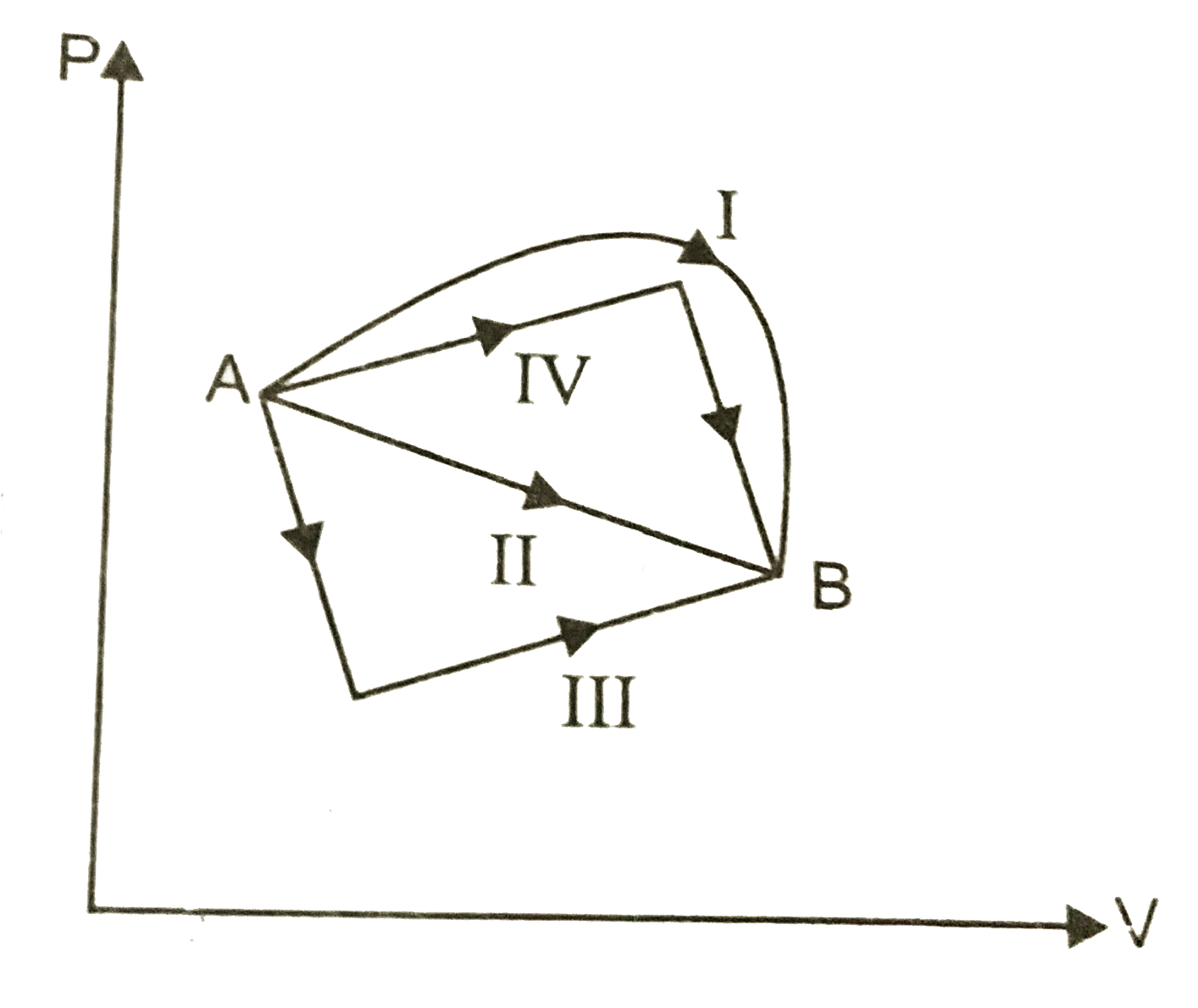
View SolutionA diatomic ideal gas undergoes a thermodynamic change according to the P-V diagram shown in the figure. The total heat given to the gas is nearly ( use ln2=0.7):
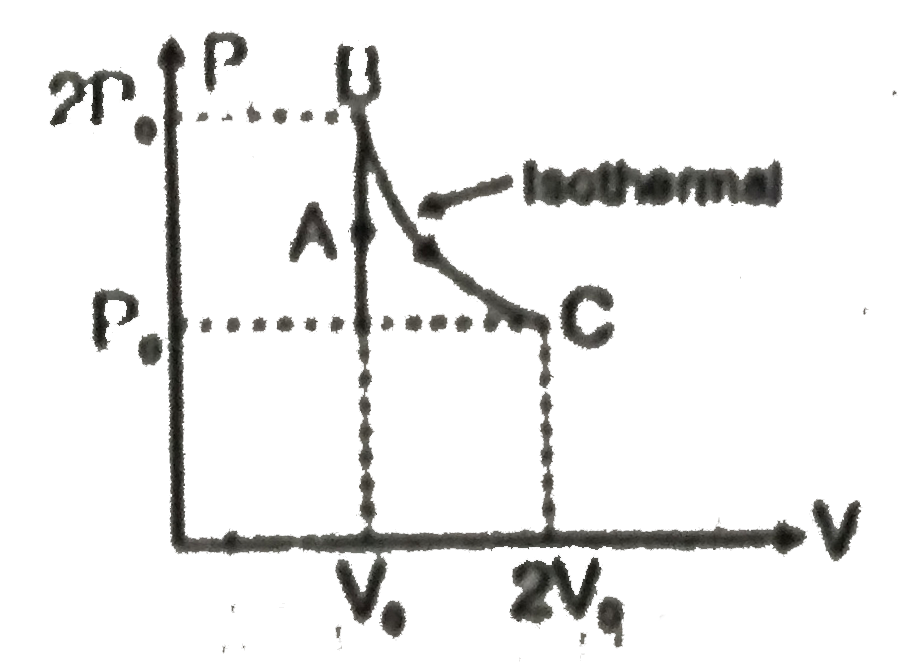
View SolutionFigure shows the p-V diagram of an ideal gas undergoing a change of state from A to B. Four different parts I, II, III and IV as shown in the figure may lead to the same change of state. ltBrgt
View SolutionFig. shows the P-V diagram of an ideal gas undergoing a change of state from A to B. from different process I, II, III & IV as shown in figure may lead to the same change of state
View SolutionA diatomic ideal gas undergoes a thermodynainic change according to the P-V diagram shown in figure, The total heat given to the gas is nearly
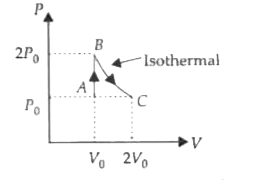
View SolutionAn ideal gas undergoes four different processes from the same initial state as shown in figure of P-V diagram. Four processes are adiabatic, isothermal, isobaric and isochoric. Out of 1,2,3 and 4 which one is adiabatic ?
View SolutionThe given P - V diagram is showing an ideal gas undergoing a change of state different paths I, II, III and IV that lead to the same change of state, then change in internal energy is
View SolutionFigure shows the p−V diagram of an ideal gas undergoing a change of state from A to B. Four different parts I, II, III and IV as shown in the figure may lead to the same change of state. ltBrgt
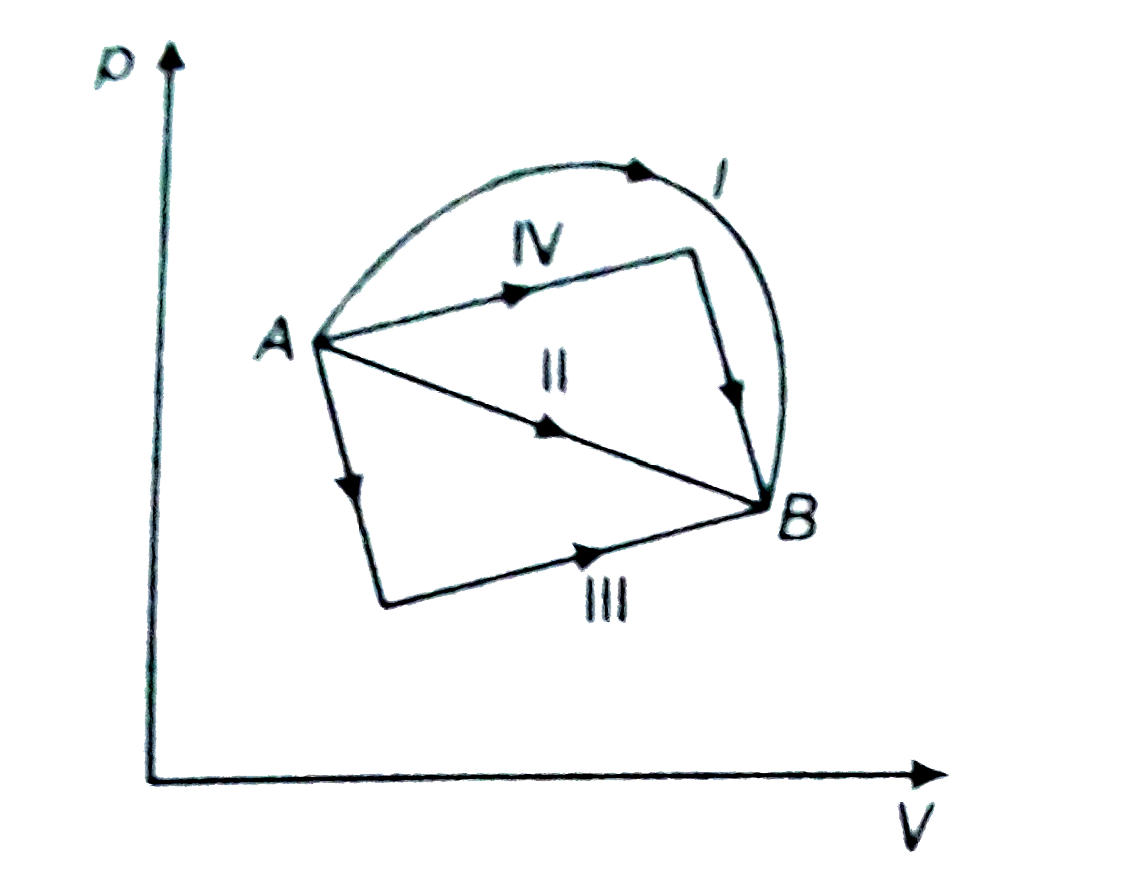
View SolutionAn ideal gas undergoing a change of state from A to B through four different paths I, II,III and IV as shown in the P-V diagram that lead to the same change of state tyhen the change in internal energy is
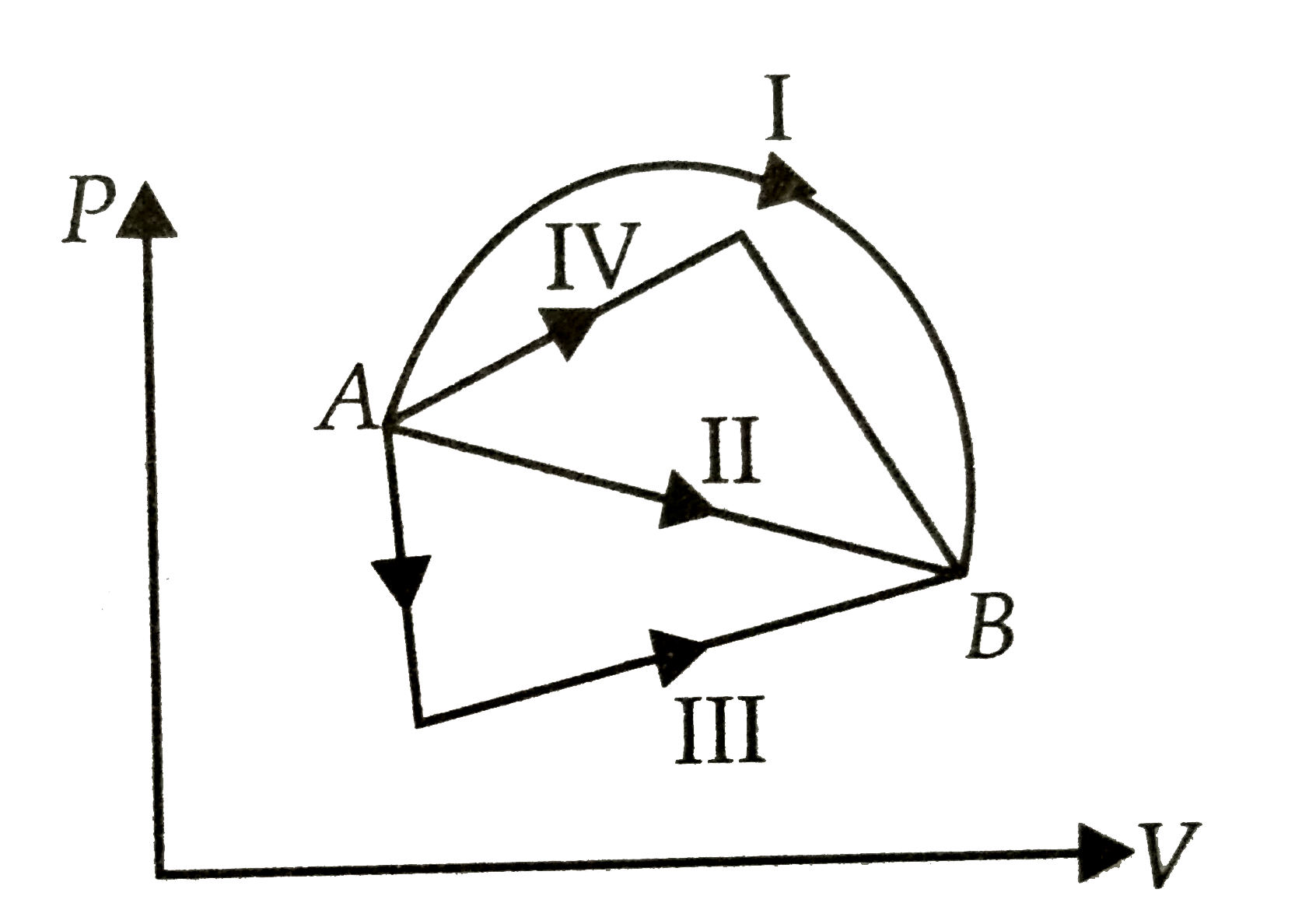
View SolutionP-V diagram of an ideal gas for a process ABC is as shown in the figure.

Change in internal energy of the gas during the process ABC
View Solution
